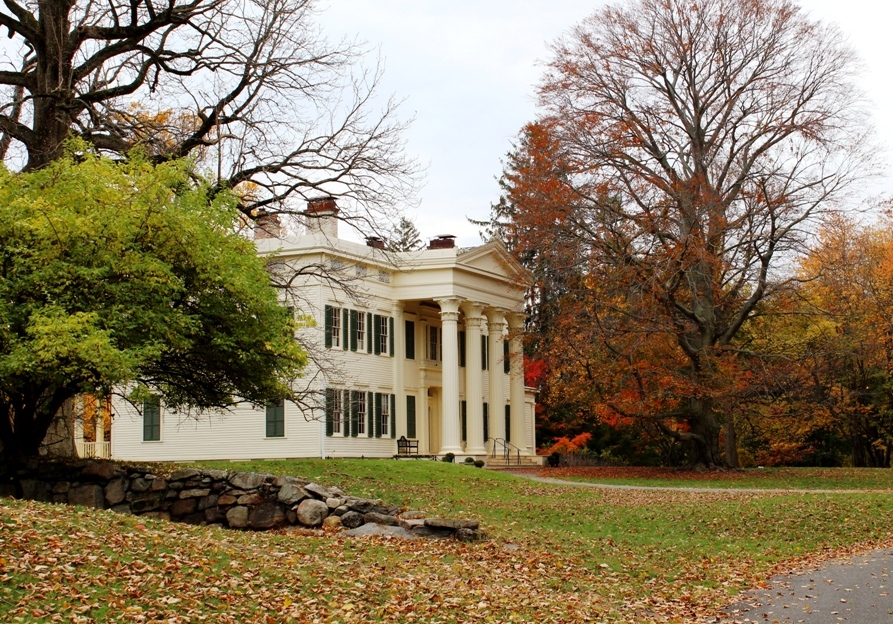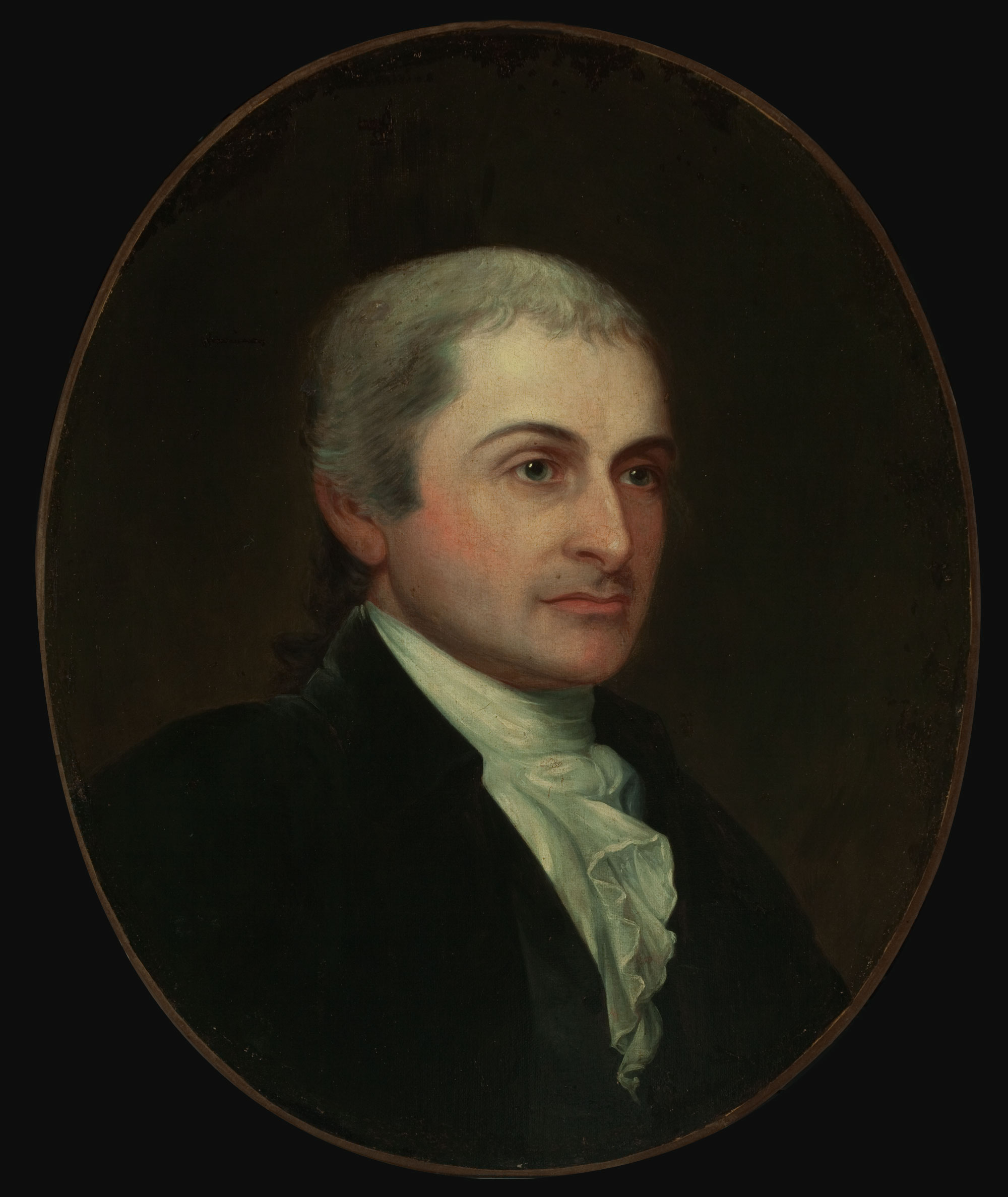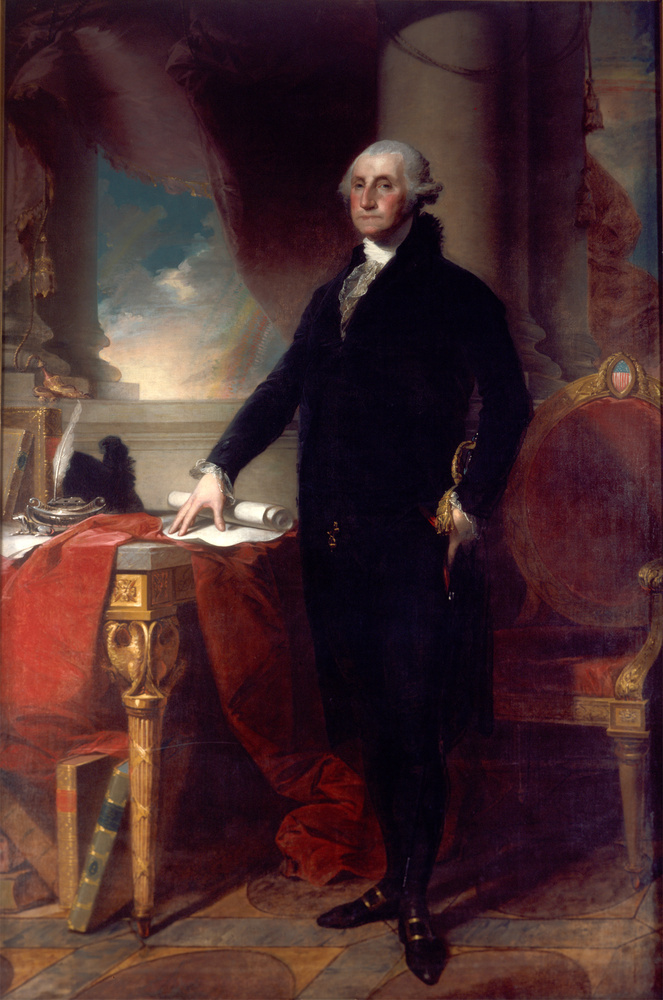|
Abigail (slave)
Abigail (died December 1783), called Abby, was an African American woman owned as a slave by the American statesman John Jay. She died after attempting to escape in 1783 in Paris, where Jay helped negotiate the Treaty of Paris to secure America's independence. Abigail belonged to the Jay household since at least 1776; she was one of at least 17 slaves owned by Jay. In 1779, she was the only slave to accompany Jay and his family on their trip to Paris. When he left Paris for London in 1783, his family and Abigail remained in Paris. His wife Sarah regularly wrote to him about the household's affairs, and it is from this correspondence that almost all that is known about Abigail is drawn.Stahr cites the following primary sources for the correspondence pertaining, ''inter alia,'' to Abigail: Sarah Jay to John Jay, 6 November 1783, 2 JPM 635–36; John Jay to William Temple Franklin, 11 November 1783, 2 JPM 639; Sarah Jay to John Jay, 18 November 1783, 2 JPM 643; John Jay to Sarah Jay, 2 ... [...More Info...] [...Related Items...] OR: [Wikipedia] [Google] [Baidu] |
African Americans
African Americans (also referred to as Black Americans and Afro-Americans) are an ethnic group consisting of Americans with partial or total ancestry from sub-Saharan Africa. The term "African American" generally denotes descendants of enslaved Africans who are from the United States. While some Black immigrants or their children may also come to identify as African-American, the majority of first generation immigrants do not, preferring to identify with their nation of origin. African Americans constitute the second largest racial group in the U.S. after White Americans, as well as the third largest ethnic group after Hispanic and Latino Americans. Most African Americans are descendants of enslaved people within the boundaries of the present United States. On average, African Americans are of West/ Central African with some European descent; some also have Native American and other ancestry. According to U.S. Census Bureau data, African immigrants generally do not se ... [...More Info...] [...Related Items...] OR: [Wikipedia] [Google] [Baidu] |
John Jay
John Jay (December 12, 1745 – May 17, 1829) was an American statesman, patriot, diplomat, abolitionist, signatory of the Treaty of Paris, and a Founding Father of the United States. He served as the second governor of New York and the first chief justice of the United States. He directed U.S. foreign policy for much of the 1780s and was an important leader of the Federalist Party after the ratification of the United States Constitution in 1788. Jay was born into a wealthy family of merchants and New York City government officials of French Huguenot and Dutch descent. He became a lawyer and joined the New York Committee of Correspondence, organizing American opposition to British policies such as the Intolerable Acts in the leadup to the American Revolution. Jay was elected to the First Continental Congress, where he signed the Continental Association, and to the Second Continental Congress, where he served as its president. From 1779 to 1782, Jay served as the ambassador ... [...More Info...] [...Related Items...] OR: [Wikipedia] [Google] [Baidu] |
Treaty Of Paris (1783)
The Treaty of Paris, signed in Paris by representatives of George III, King George III of Kingdom of Great Britain, Great Britain and representatives of the United States, United States of America on September 3, 1783, officially ended the American Revolutionary War and overall state of conflict between the two countries. The treaty set the Demarcation line, boundaries between the British North America (later called Canada) and the United States, United States of America, on lines "exceedingly generous" to the latter. Details included fishing rights and restoration of property and Prisoners of war in the American Revolutionary War, prisoners of war. This treaty and the separate peace treaties between Great Britain and the nations that supported the American cause—France in the American Revolutionary War, France, Spain in the American Revolutionary War, Spain, and the Dutch Republic—are known collectively as the Peace of Paris (1783), Peace of Paris. Only Article 1 of the tr ... [...More Info...] [...Related Items...] OR: [Wikipedia] [Google] [Baidu] |
Sarah Livingston Jay
Sarah Van Brugh Livingston Jay (August 2, 1756 – May 28, 1802) was an American socialite and wife of founding father John Jay, in which capacity she was the wife of the President of the Continental Congress, of the Chief Justice of the United States, and First Lady of New York. Early life Sarah was born in 1756. She was the eldest daughter of wealthy landowner William Livingston (1723–1790) and Susannah French (1723–1789). Her father was an attorney who was a signer of the United States Constitution and later served as the first post-colonial Governor of New Jersey during the American Revolutionary War from 1776 until his death in 1790. Her paternal grandparents were Philip Livingston, the 2nd Lord of Livingston Manor, and Catherine Van Brugh, the only child of Albany mayor Pieter Van Brugh (1666–1740). Her paternal uncles included Robert Livingston (1708–1790), 3rd Lord of Livingston Manor, Peter Van Brugh Livingston (1710–1792), New York State Treasurer, and Phi ... [...More Info...] [...Related Items...] OR: [Wikipedia] [Google] [Baidu] |
Peter Jay Munro
Peter Jay Munro (January 10, 1767 – September 22, 1833) was an American lawyer and Federalist politician from New York. Early life Munro was born on January 10, 1767, in Rye in the Province of New York in what was then British America. He was the only child of the Rev. Harry Munro (1730–1801) and Eva ( Jay) Munro (1728–1810), who later became estranged. His father was the rector of St. Peter's Church in Albany who was forced to flee America in 1778 and return to his native land, Scotland (where he died in 1801), because he was considered a loyalist. His mother was the eldest child of Peter Jay (a wealthy trader in furs, wheat, timber, and other commodities) and Mary ( Van Cortlandt) Jay (a daughter of Jacobus Van Cortlandt, a New York Assemblyman who was twice elected mayor of New York City, and sister to Frederick Van Cortlandt). His maternal uncle was Founding Father John Jay, who was the second governor of New York and the first chief justice of the United State ... [...More Info...] [...Related Items...] OR: [Wikipedia] [Google] [Baidu] |
Paris Police Prefecture
The police prefecture (french: préfecture de police) is the unit of the French Ministry of the Interior that provides police, emergency services, and various administrative services to the population of the city of Paris and the surrounding three suburban of Hauts-de-Seine, Seine-Saint-Denis, and Val-de-Marne. It is headed by the Prefect of Police (). "" (), as it is also known, supervises the Paris Police force, the Paris Fire Brigade, and various administrative departments in charge of issuing ID cards and driver licenses or monitoring alien residents. The Prefecture of Police also has security duties in the wider Île-de-France as the is also (Prefect for the Defense zone). Since 2017, it has acquired direct responsibility for the three main airports of the Paris area (Charles de Gaulle, Orly and Le Bourget). In addition to the , the French government created the Paris Municipal Police (french: Police municipale de Paris) in 2021. In contrast with the Préfecture, the ... [...More Info...] [...Related Items...] OR: [Wikipedia] [Google] [Baidu] |
Lettres De Cachet
''Lettres de cachet'' (; ) were letters signed by the king of France, countersigned by one of his ministers, and closed with the royal seal. They contained orders directly from the king, often to enforce arbitrary actions and judgments that could not be appealed. In the case of organized bodies, 'lettres de cachet’ were issued for the purpose of preventing assembly or accomplishing some other definite act. The provincial estates were convoked (called to assembly) in this manner, and it was by a ''lettre de cachet'' (in this case, a ''lettre de jussipri''), or by showing in person in a ''lit de justice'', that the king ordered a ''parlement'' to register a law despite that ''parlement''s refusal to pass it. The best-known ''lettres de cachet'', however, were penal, by which a subject was imprisoned without trial and without an opportunity of defense (after inquiry and due diligence by the ''lieutenant de police'') in a state prison or an ordinary jail, confinement in a conve ... [...More Info...] [...Related Items...] OR: [Wikipedia] [Google] [Baidu] |
Manumission
Manumission, or enfranchisement, is the act of freeing enslaved people by their enslavers. Different approaches to manumission were developed, each specific to the time and place of a particular society. Historian Verene Shepherd states that the most widely used term is gratuitous manumission, "the conferment of freedom on the enslaved by enslavers before the end of the slave system". The motivations for manumission were complex and varied. Firstly, it may present itself as a sentimental and benevolent gesture. One typical scenario was the freeing in the master's will of a devoted servant after long years of service. A trusted bailiff might be manumitted as a gesture of gratitude. For those working as agricultural laborers or in workshops, there was little likelihood of being so noticed. In general, it was more common for older slaves to be given freedom. Legislation under the early Roman Empire put limits on the number of slaves that could be freed in wills (''lex Fufia Can ... [...More Info...] [...Related Items...] OR: [Wikipedia] [Google] [Baidu] |
Benjamin Franklin
Benjamin Franklin ( April 17, 1790) was an American polymath who was active as a writer, scientist, inventor, statesman, diplomat, printer, publisher, and political philosopher. Encyclopædia Britannica, Wood, 2021 Among the leading intellectuals of his time, Franklin was one of the Founding Fathers of the United States, a drafter and signer of the United States Declaration of Independence, and the first United States Postmaster General. As a scientist, he was a major figure in the American Enlightenment and the history of physics for his studies of electricity, and for charting and naming the current still known as the Gulf Stream. As an inventor, he is known for the lightning rod, bifocals, and the Franklin stove, among others. He founded many civic organizations, including the Library Company, Philadelphia's first fire department, and the University of Pennsylvania. Isaacson, 2004, p. Franklin earned the title of "The First American" for his early and indefa ... [...More Info...] [...Related Items...] OR: [Wikipedia] [Google] [Baidu] |
William Temple Franklin
William Temple Franklin Jr, known as Temple Franklin, (February 22, 1760, in London – May 25, 1823, in Paris) was an American diplomat and real estate speculator. He is best known for his involvement with the American diplomatic mission in France during the American Revolutionary War. Beginning at the age of 16, he served as secretary to his grandfather Benjamin Franklin, who negotiated and agreed to the Franco-American Alliance. The younger Franklin was also secretary for the American delegation that negotiated United States independence at the Treaty of Paris in 1783. He returned to Philadelphia with his grandfather afterward. Finding his prospects limited in the United States, he later returned to Europe, where he lived mostly in France. Early life and education William Temple Franklin, called Temple, was born in 1760, the illegitimate (and only) son of William Franklin, notably illegitimate as well, who sired him while a law student in London. His mother is unknown, and ... [...More Info...] [...Related Items...] OR: [Wikipedia] [Google] [Baidu] |
Livre Tournois
The (; ; abbreviation: ₶.) was one of numerous currencies used in medieval France, and a unit of account (i.e., a monetary unit used in accounting) used in Early Modern France. The 1262 monetary reform established the as 20 , or 80.88 grams of fine silver. The was a gold coin of one minted in large numbers from 1360. In 1549, the was decreed a unit of account, and in 1667 it officially replaced the . In 1720, the was redefined as 0.31 grams of pure gold, and in 1726, in a devaluation under Louis XV, as 4.50516 grams of fine silver. It was the basis of the revolutionary French franc of 1795, defined as 4.5 grams of fine silver exactly. Circulating currency In France, the was worth 240 deniers (the "Tours penny"). The latter were initially minted by the abbey of Saint Martin in the Touraine region of France. Soon after Philip II of France seized the counties of Anjou and Touraine in 1203 and standardized the use of the there, the began to supersede the (Paris pou ... [...More Info...] [...Related Items...] OR: [Wikipedia] [Google] [Baidu] |
African-American Women
Black women are women of sub-Saharan African and African diaspora, Afro-diasporic descent, as well as women of Aboriginal Australians, Australian Aboriginal and Melanesians, Melanesian descent. The term 'Black people, Black' is a Race (human categorization), racial classification of people, the definition of which has shifted over time and across cultures. As a result, the term 'Black women' describes a wide range of cultural identities with several meanings around the world. Being a Black woman is also frequently described as being hit by a double whammy due to the twofold social biases encountered by Black women for being female as well a part of the Black community. Intersectionality and misogynoir Kimberlé Williams Crenshaw developed the theory of intersectionality, which highlighted the overlapping discrimination faced by Black women (on the basis of both race and gender) in the United States. The theory has been influential in the fields of feminism and critical race theory ... [...More Info...] [...Related Items...] OR: [Wikipedia] [Google] [Baidu] |






.jpg)
